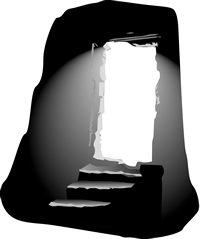| The Bethany Mass |
The Bethany Mass has proved a much appreciated way of helping families remember those who have died, especially in the past year. Typically, the Mass is held on a weekday evening during the month of November (the traditional time in the Catholic tradition to remember and pray for the dead). A personal letter of invitation goes out to each family that has suffered a bereavement in the preceeding year, and a general letter to the whole school community, parents and staff. The tone of the Mass is welcoming and simple with care taken to ensure it does not feel like a second funeral for families. It is called the Bethany Mass because the gospel is the raising of Lazarus at Bethany. |
|
| Suggestions for preparing the Bethany Mass | |
1. Send out personal letters of invitation to each school family that has suffered a bereavement in the past year - obviously,it is very important to get this right (the name of the person who has died, their relationship to the family, etc. - Heads of Year can be of great help here) 2. Once you have established an annual Bethany Mass in your school, it may be good to collect the names of those who attend so a more personal invitation can be sent to them each following year. 3. A general invitation, explaining what the Bethany Mass is about, is sent to the whole school community incuding parents and families, teaching and support staff, governors, etc. 4. Invite those attending, if they wish to do so, to bring a photograph of the family member who has died. These can be placed on the altar (or on a table in front of the altar, together with the November Lists) before Mass begins. Again, it is important to be sensitive here - placing the photographs more formally during the liturgy may be too emotional for some. Doing it before Mass, as they arrive, makes it less stressful. Have a couple of pupils on hand to spot who has brought photographs and invite, and accompany them, to place the pictures on the altar as soon as they arrive. 5. Make sure there are staff and pupils on hand to welcome people, give them a service sheet, and show them to their places. This is especially important at the Bethany Mass. 6. It is good to prepare the words the priest speaks by way of introduction well. Or to get the Head or another appropriate adult to speak them (this probably isn't a role for a pupil). These words set the tone of the Mass and will serve to reassure those who may need reassuring. A suggested text is given below. 7. Choose readings and the texts of the Mass carefully. Some can sound quite brutal. 8. The gospel is the story of the raising of Lazarus at Bethany (John 11). You may wish to consider having some pupils do a dramatic reading of this gospel (see dramatised version below). 9. Make sure the Mass is unhuried and includes quiet moments (don't succumb to the temptation to fill every space with music). At a Mass as directly personal as this, people need time to reflect and be with their own thoughts. Try to build opportunities for this into the liturgy without being too directive about it (eg. Have the offertory procession and presentation of the gifts in silence). 10. During the bidding prayers, have some pupils light candles placed before the altar (maybe purple candles) - one for each prayer. 11. At the end of Mass, invite people to stay briefly for coffee or rereshments; but be aware that some may just want to slip away unnoticed. 12. You may wish to give each person a prayer card (praying for those who have died) to take away with them. |
|
| Mass Texts | |
Mass Texts The new English Roman Missal offers nine sets of prayers for Masses for the dead (beginning on page 1456). Some of these prayers are better phrased and more suited to the Bethany Mass. It is permissible to choose any combination of prayers. The Prefaces for the dead begin on page 656 (Preface Nos. 78-82). Prefaces I (No. 78) or III (No.80) for the Dead are probably the best for this occasion. Reading Readings for Masses for the dead are in Volume III of the Lectionary (the brown volume). Perhaps the most suitable readings for the Bethany Mass would be: Psalm The most obvious psalm to use, especially if sung, is psalm 23 (The Lord is my shepherd) but others are given in the Lectionary. Alleluia Alleluia, alleluia. Gospel The Bethany Mass uses the gospel story of the raising of Lazarus at Bethany - John 11:32-45.
Bidding Prayers A way of doing these bidding prayers might be to have two readers - one to read the intention, the first part of each bidding prayer; and another to read to second part, the bidding prayer itsel. fOthers might light a candle during each prayer. The bidding prayers conclude with the traditional Requiem aeternam (it may be good to print this prayer in the order of service so that everyone can easily join in).
|
|
| Images Click on thumbnail for larger image |
|
 |
Christ calls forth Lazarus origin unknown (what does this mean?) |
 |
Resurrection of Lazarus (1896) by Henry Ossawa Tanner (1859-1937) Musée d'Orsay, Paris |
 |
Lazarus (2009) CJ Tañedo (b.1979) Phillipines |
 |
The Raising of Lazarus (after Rembrandt) (1890) Vincent van Gogh (1853-90) Rijksmuseum Vincent van Gogh, Amsterdam |
 |
The Raising of Lazarus from ClipArtBest.com |
 |
The Raising of Lazarus origin unknown |
 |
Lazarus in the Tomb This is probably a drawing of Christ in the tomb but could also be used to illustrate the Lazarus story origin unknown |
 |
Empty Tomb origin unknown |
